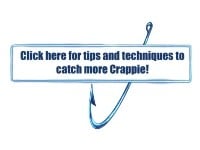The fall / winter months are the best times to do this because most of our lakes are drawn down to winter pool or their lowest level for the spring rains. Leave the rods and reels at home this day and do nothing but scout. If you donít do anything other than ride around your favorite lake and get a clear picture of these areas in your mind. Thatís what you need to do; find that spot now that could hold that spring trophy. When you find anything that looks like a fish holding spot donít hesitate to mark this as a waypoint. If you have to get out of the boat on dry land, donít hesitate.
Carry a Handheld GPS
Walking around on dry land with a handheld GPS is ideal. Be sure to select a hand-held that you can transfer your waypoint to the depthfinder on your boat. Lowrance make an excellent handheld thatís compatible with marine GPS models. Be sure to get as close to the target as possible.
Take Plenty Pictures
I also will use some of the technology available to easily save my survey results. I like to take high quality photos and save them to a waypoint. During the spring when the water is at a higher level, I can go to that waypoint and bring up the photos of what the area looked like in low water. I can see every stump, stake bed, laydown, ditch, or creek. Lowrance EasyGPS lets you geotag your photos allowing you to map them on flickr.com or Google Earth.
Make Plenty Waypoints
You should search the entire lake; not just the shallow areas. Be sure to search areas around the lake levee. Make a waypoint whenever you see anything out of the ordinary. Take pictures each time you make a waypoint. The picture should be taken of whatever you see that will be covered by water in the spring. You may see an indention, log pile or rock pile along the levee. Take a picture, make a waypoint. You can rest assured that cover is not going to move.
This is an excellent way to find productive points, creeks, and ditches that can produce big time in the spring. There is absolutely no better time to do your scouting. Put some effort into your scouting and it will pay huge dividends in the spring.
Wear Sunglasses
I wear a pair of Costa Sunglasses. They are polarized to a point where I can see stumps and laydowns under water during the fall and early winter months. Itís the time of the year when the lake is the clearest. Rains are few and far between this time of year; you can see several feet down in most southern lakes. Mark these spots now when the water may be on 3 to 4 feet deep, springtime water depths may be 10 to 12 feet deep.
Good quality sunglasses are worth the investment. Donít hesitate to make the investment. Theyíll serve two purposes, eye protection and help you locate those hidden underwater spots that hold fish.
Put in Your Own Cover
Low lake levels allow you the perfect opportunity to put in your own stake beds, brushpiles, rock piles or other cover. You can do it on the ground and not need a boat. Be sure to check with the lake authorities before you begin. Find out what type of cover they allow and where you are allowed to place it.
Putting out cover is much easier and faster when itís done on foot instead of from a boat. Iíve even dug out my own bedding area and placed gravel in those areas. This works well come spring spawning time.
Conclusion
My job as an outdoor writer is to educate, teach and keep my readers informed about the latest techniques and technology. If you follow my writings, you know that I try to communicate to you how to find and catch quality fish. I introduce you to the latest fishing technology and do my best to explain the features.
There is no short-cut to being a productive fishermen; it takes time on the water. I often get to fish with or interview some of the best crappie fishermen in and around the country. I ask these guys the tough questions. Most of them donít mind sharing their methods and techniques with me so that I can pass them on to you.
My compensation comes when one of you come up to me and say thanks for the information. I read your article and followed your instructions. It worked to perfection. Thatís all the pay I need. That makes me feel like I have arrived. Itís better than money. It gives me a tremendous feeling of satisfaction. I quote Benjamin Franklin, ďYou will not be forgotten as soon as you are dead and rotten, either write something worth reading or do something worth writing about.Ē I try to do both. Bernard - Magnolia Crappie Club




 Articles and Stories
Articles and Stories

















vBulletin Message